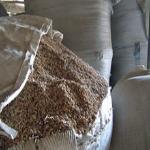25 June 2010

Photo: Photos.com
Harvard researchers found that white rice consumption increases the risk of Type 2 diabetes while brown rice consumption actually reduces the risk.
Reducing your risk of diabetes may be as simple as having a bowl of brown rice instead of white. Researchers from the Harvard School of Public Health have just released a study showing that white rice consumption increases the risk of Type 2 diabetes while brown rice consumption actually reduces the risk.
Rice is one of the world's most abundant food crops. The success of this grain can be attributed to the availability of both manpower for planting and harvesting, as well as plentiful rainfall in the regions where it's grown. White rice has become especially prevalent because of its long shelf life. Since it is such an important part of diets around the world, researchers like Qi Sun are now looking at its relationship to chronic disease.
"More and more I realize that actually chronic disease prevention is very important and also that diet is one of the most important risk factors for chronic diseases," says Sun.
Sun is the lead author of a new report from the Harvard School of Public Health. His study shows that a diet high in white rice is associated with an increased risk of Type 2 diabetes, a serious health condition in which the body is unable to properly use sugar in the bloodstream.
Study participants included more than 39,000 men and 157,000 women. They were asked about their diet and lifestyle habits as well as any pre-existing diseases. The researchers found that participants who ate five or more servings of white rice per week had a 17 percent increased risk of developing Type 2 diabetes. In contrast, those who ate two or more servings of brown rice per week had an 11 percent reduced risk.
Brown rice is the naturally occurring form of the grain. Refining it involves removing the outer layers, including the husk, bran and germ, leaving the inner white kernel. The end product is then often enriched, to replace a portion of the nutrients lost during the refining process. However, white rice is essentially a starch.
Sun explains that the loss of the fiber-rich outer layer allows starch to be absorbed more quickly into the body.
"The outer layers will slow down the penetration of digestive enzyme into the starch part so that the release of the sugar into the bloodstream will be slow for brown rice in comparison with white rice."
While the exact reasons are unknown, a diet of foods that quickly release sugar into the bloodstream is associated with a greater risk of Type 2 diabetes. This makes the selection of food such as brown rice important in preventing this disease.
In addition to this major benefit, Sun points out that less refined grains tend to have more nutritional benefits than their refined counterparts. In fact, he says replacing rice with whole grains such as whole wheat and barley could result in a 36 percent lower chance of developing Type 2 diabetes.
"I think our current research for rice is consistent with the overall picture in that whenever possible it is reasonable to recommend people to replace refined carbohydrates, including white rice, white bread, added sugar, with whole grains."

VOA - S. Baragona
Brown rice spoils more quickly than white rice making it an unsuitable commodity for poor or remote communities.Unfortunately, brown rice is more perishable than white rice. Because of the oil-rich bran layer, it spoils quickly if not refrigerated or stored in vacuum-sealed bags. That makes it an unsuitable commodity for poor or remote communities.
To address this issue, the International Rice Research Institute, or IRRI, is working in collaboration with the Food Futures Flagship at the Commonwealth of Scientific and Industrial Research Organization in Australia, towards developing varieties of white rice whose starch is released slowly. IRRI researcher Melissa Fitzgerald says finding the genes which control starch release is just the first step toward creating a grain that people will accept as part of their diet.
"And so once we understand the genetics, we can try and just take those particular genes and work with popular varieties of rice to cross those particular genes into a popular variety and still maintain the expected cooking and eating qualities of the grain," she says.
With new studies finding increasingly strong links between diabetes and cardiovascular disease and even certain types of cancers, research to improve this dietary staple has taken on a new urgency.